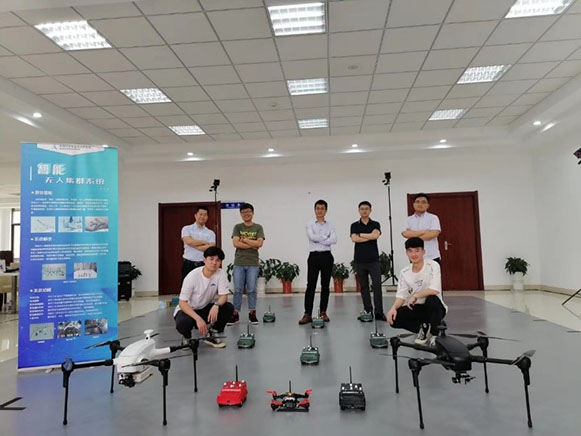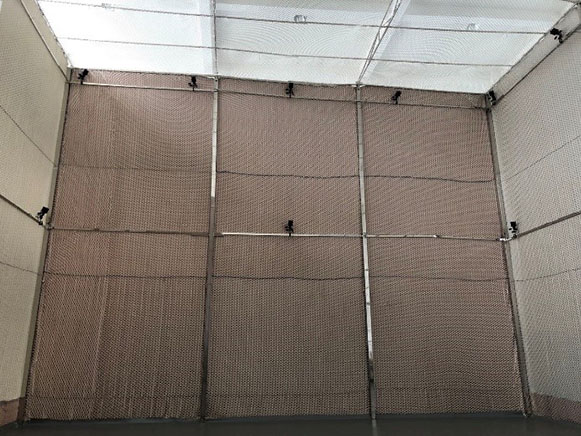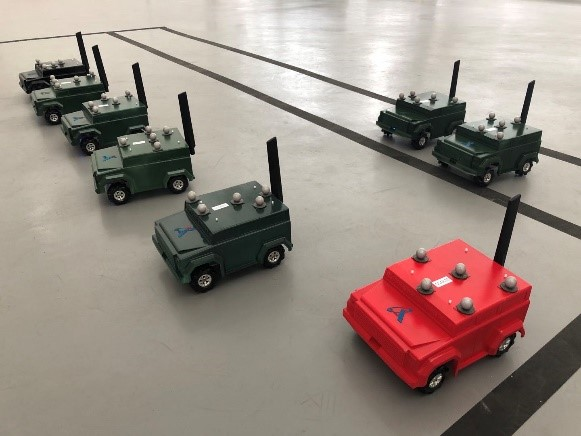Cooperative control improves the robustness of agent system, and formation obstacle avoidance is the key point.
With the development of industrial technology, the complexity and scale of tasks gradually increase, and the ability of single agent to obtain information and solve problems is limited, which can not meet the task requirements in most cases. However, multi-agent system emphasizes the cooperation and coordination among units, and multi-agent cooperative control can greatly improve work efficiency and ability. At present, there are many researches on cooperative control of multi-agents, including cooperative modes among agents, communication modes and obstacle avoidance methods, among which the most important one is the research of multi-agent formation obstacle avoidance control algorithm.
The sub-millimeter positioning of the optical positioning system helps the intelligent unmanned swarm system.
Pu Zhiqiang, a teacher from Institute of Automation, Chinese Academy of Sciences, developed an intelligent unmanned swarm system. The unmanned swarm system is divided into three subsystems: positioning subsystem, communication subsystem and control subsystem, which can realize the functions of single unmanned ground vehicle and unmanned aerial vehicle control, ground-air cooperation, swarm battle and unmanned ground vehicle and unmanned aerial vehicle formation performance; It can be used in popular science for teenagers, education and training, deep secondary development of universities or research institutes, and industrial application fields such as regional logistics and civil-military integration.

The positioning system uses NOKOV optical motion capture system and vehicle inertial unit for positioning. In view of the capture range, 24 Mars2H optical positioning cameras were erected, including 8 cameras at 5m height and 16 cameras at 8.5m height, covering 12m*12m*8.5m space.

Markers are placed on each mobile robot and obstacle, and different markers are arranged to distinguish the ID of individual robots. By capturing markers on mobile robots and obstacles, the three-dimensional coordinates of markers are obtained,and SDK is used to broadcast out in real time. A single robot can receive the position information of ontology, neighboring mobile robots and obstacles, and the accuracy of coordinate information reaches sub-millimeter level.

Because the positioning accuracy of NOKOV optical positioning system is several orders of magnitude higher than that of inertial navigation device, when the mobile robot can receive the data transmitted by optical positioning, the optical positioning system is used for positioning and correcting the accumulated error of inertial sensor data, keeping the data stored by the robot itself consistent with the data of the optical positioning system. In a certain period of time, when the data transmitted by the positioning system cannot be obtained due to occlusion, the stored data of inertial sensors are used for positioning to ensure the normal operation of the mobile robot.
The multi-mobile robot system adopts the method of combining spatio-temporal A* algorithm and artificial potential field method to avoid obstacles. In this method, the spatio-temporal A* algorithm is used as a global path planning algorithm to plan collision-free paths for multi-robot systems. In this algorithm, the time dimension is added to the traditional A* algorithm, and the previously planned multi-robot path information is stored in the form of reservation table. With this information, a collision-free path is generated for the next robot. Secondly, the artificial potential field method as a local path planning algorithm enhances the stability of this method in dynamic environment. When faced with unknown dynamic obstacles in the environment, mobile multi-robots can avoid them in time. Therefore, as an obstacle avoidance method, the combination of spatio-temporal A* algorithm and artificial potential field method can generate efficient collision-free path for multi-robot system, and make it complete collision avoidance well.
In addition, the whole multi-robot system is applied to science popularization and education training. With regard to science popularization, the system provides performances and interactions for primary and secondary school students, popular science venues and large-scale popular science activities. Secondly, it also provides detailed and interesting popular science courses. In the aspect of education training, the secondary development technology research can be carried out based on the system, and then the curriculum system related to the system and artificial intelligence can be provided. Furthermore, the technical scheme of laboratory construction can be provided for major research institutions.
The innovation team of aircraft intelligent technology in Institute of Automation, Chinese Academy of Sciences consists of more than 20 researchers, associate researchers, engineers, doctors and master students. The team has been engaged in research on robust adaptive control and swarm intelligence of unmanned autonomous platform for a long time, and has made a series of important achievements in applied basic research, engineering system development and industrialization.